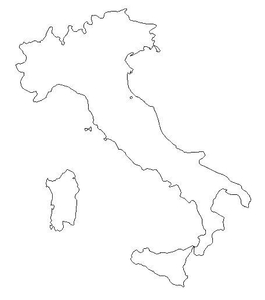Origin
The origin of the Swabian Maultaschen is not definitively known, however there are three main legends that were passed down orally before the first written text appeared in 1831. The first, and most believable theory speculates that Maultaschen is a “pirated copy” of the Italian ravioli that was brought over by the Waldensians starting in 1517. The Waldensians were European Christian revolutionaries (mainly originating from Rome) who crusaded against Catholicism and migrated out of the urban centers into more rural settings. This division of faiths was sparked in Germany, in particular, by the theologian Martin Luther’s declaration against the Catholic Church. Followers of the movement voyaged across Europe spreading the early form of Lutheranism and settling and forming churches along the way (McCallum, 2012). The movement’s followers came from various European countries, all united under Luther’s religious goal.
In the second theory, not much is known other than that a legendary countess and ruler named Margreth Von Tirol, or more commonly referred to as Maultasch, brought the dish back with her from Italy to Tyrol, an Austrian state close to the boundary Italy, and the dumping was named in her honor. Some speculate, however, that the dumpling is only associated with this Austrian leader because she received the nickname “Maultasch,” which derives from the German word “Mouthpocket,” for her “large, distorted mouth and loose-hanging jaw” (www.fembio.org).
In the third legend, the Cistercians used the dumpling as a “fasting trick” in the 17th century during the Thirty Years War. Monks were forbidden to eat meat on Fridays or during fasting season so legend has it that a monk from the Maulbronn Monastery, now a UNESCO World Heritage Site, would hide the meat by mixing it with vegetables then covering it with the dough. This invention was called the “Maulbronn Nudeltaschen” which was later shortened to “Maultaschen” (germanfoodguide.com). This legend still carries on today as the Maultaschen is commonly eaten on Maundy Thursday and Good Friday under the belief that the meat is hidden beneath the dough to hide from the eyes of God. Literally, the word could have derived from “Maultatzen” or “Maultaschen” which translates to “a slap in the face,” thus equating a swollen cheek to the swollen dumpling.

